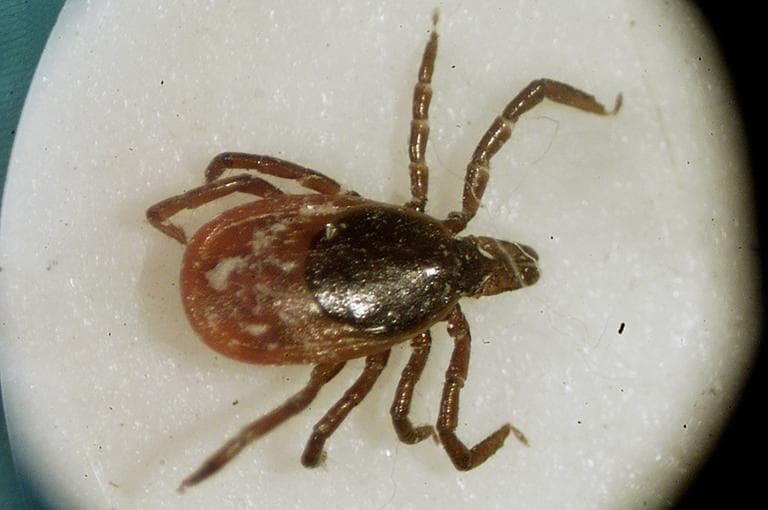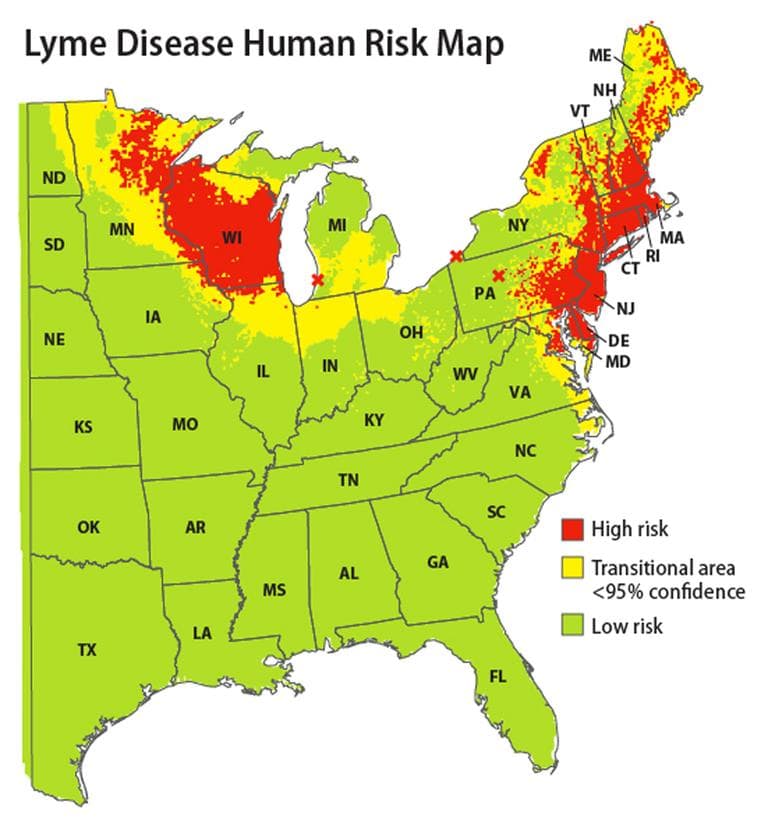Advertisement
Tracking Lyme Disease
ResumeTick borne Lyme disease is on the move, all the way to Minnesota and Florida now. We’ll track Lyme.

Tick-borne Lyme disease used to show up in a little fringe of the coastal northeast United States. A bad disease, but in small terrain. Small numbers. Well, look again. Lyme disease is spreading far and wide.
Across Pennsylvania, into Ohio, southwest Michigan, northern Illinois. Heavy in Wisconsin, in Minnesota, showing up in North Dakota, even California. Look south and it’s big in New Jersey, Maryland, northern Virginia. And creeping beyond. It’s a story of ticks and deer and foxes and coyotes and birds. And pain.
This hour, On Point: the big, new national terrain of tick-borne Lyme disease.
-Tom Ashbrook
Guests
Maria Ana Diuk-Wasser, assistant professor of epidemiology at the Yale School of Medicine.
Johan Bakken, infectious-disease expert at St. Luke's Hospital in Duluth, Minnesota. Co-author of the Lyme disease treatment guidelines for the Infectious Diseases Society of America.
Vicki Buhr, a nurse practitioner at the Mayo Clinic Health System in Eau Claire, Wisconsin. She has been treating Lyme disease patients at her clinic and seen the cases of Lyme disease increasing in recent years.
From Tom's Reading List
The New York Times "Deer ticks are aptly named, in a sense; a Northeastern deer can carry over 1,000 of these ticks on its body. But as far as humans are concerned, the ticks might be more relevantly called mouse ticks. That’s because white-footed mice and other small mammals, not deer, are now known by scientists to be major carriers of Lyme disease."
WBUR "The majority of doctors and researchers say Lyme disease is caused by a tick-borne infection called borrelia burgdorferi that is easily treated with a round of antibiotics. But a small group of doctors raise questions about the tests used to diagnose Lyme and say that the infection is persistent, wreaking havoc on people’s bodies."
You can read more from the WBUR series "Living with Lyme" here.
Centers for Disease Control Check out their interactive maps of the spread of Lyme disease over time.
More

This program aired on July 3, 2012.